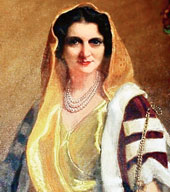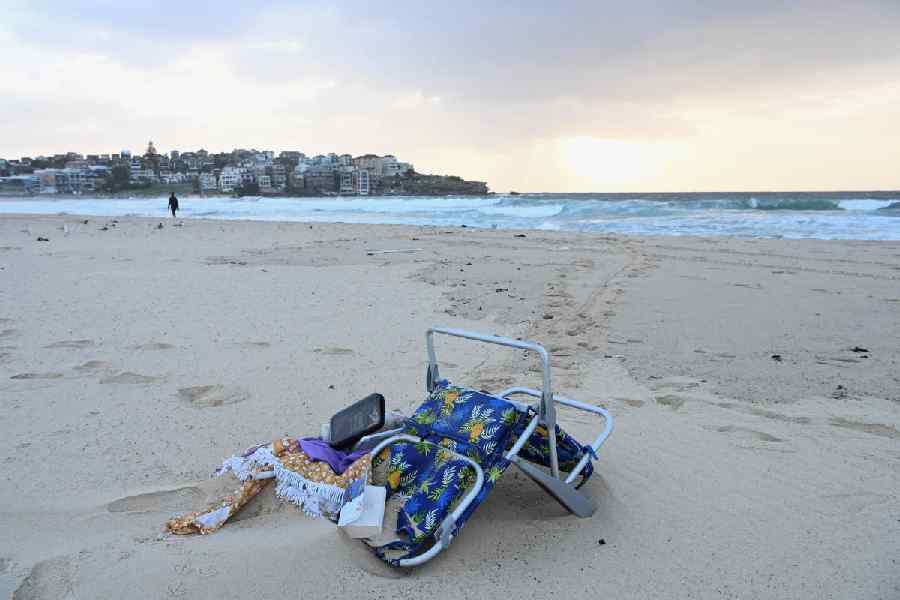 |
 |
| Bapsybanoo Pavry (above) and Emma McQuiston |
London, April 5: Emma McQuiston, 26, the daughter of a “Nigerian oil baron”, claims she will be making history as the first black — or non-white — woman to marry into British aristocracy when she ties the knot in June with Ceawlin Thynn, Viscount Weymouth, 38, heir to Longleat House and its 100,000-acre estate.
Indeed, Emma, an aspiring television chef, has posed in all her finery and posed for Tatler magazine which was informed: “There has been some snobbishness, particularly among the much older generation.”
She complained to the society bible: “There’s class and then there’s the racial thing. It’s a jungle and I’m going through it and discovering things as I grow up. I’m not super-easily offended but it’s a problem when someone’s making you feel different or separate because of your race. I have never had anything horrible said or happen, but it is something you sense. You can just tell with some people.”
But it seems that as far as being the first “person of colour” to marry into British aristocracy is concerned, she has been beaten to the draw by over 60 years by a Parsi woman.
While Emma hopes to marry into aristocracy, Bapsybanoo Pavry actually did so in 1952, becoming the Marchioness of Winchester as wife of the 16th Marquess of Winchester.
Today, The Daily Telegraph, the true keeper of Britain’s aristocratic flame, carried a brief letter from one J.A.C. Watherston of London, pointing out the error in Emma’s claim.
“Sir,” it begins, “The future wife of Viscount Weymouth has been called (prospectively) the first black marchioness. If by ‘black’ is meant non-white, then may I mention the 16th Marquess of Winchester’s third wife, Bapsy Pavry? They married in 1952. She was the subject of more than one portrait by Augustus John.”
The reader adds: “According to Who Was Who, her father was the Most Revd Khursedji Pavry, High Priest of the Parsees in India.”
It seems Watherston is spot on.
At the time of her marriage, Bapsy was 50, and her husband, Henry William Montague Paulet, 16th Marquess of Winchester, 90.
Bapsy, who spent much of her life in England, came from a very wealthy family. She attended Columbia University, New York, and, in 1928, was presented at court to King George V. Bapsy led a cosmopolitan lifestyle and was entertained by the rich and famous.
A historical note says: “Bapsy’s charms apparently proved insufficient to maintain the Marquess’s interest in the marriage. Within a few weeks of the wedding, the Marquess had abandoned Bapsy in favour of the alternative attractions of a certain Eve Fleming. The Mrs Fleming being in this case none other than the mother of the author Ian Fleming, creator of James Bond and Chitty Chitty Bang Bang, whose charms it appears were sufficient to maintain the Marquess’s interest, as he remained with his new companion until his death on the 28th June 1962, some four months shy of his centenary.”
In 1957, Bapsy took Mrs Fleming to court suing for enticement. The judge found against Mrs Fleming but in 1958 this was overruled by a court of appeal and the Marquess spent his last few years in Monte Carlo with Mrs Fleming. The note adds: “Bapsy ... remained in London until 1985 when she returned to India, where she died 10 years later in 1995.”
But Bapsy was determined not to be forgotten by history. “She settled an endowment on Oxford University which funds the annual Winchester Lecture in International Relations (the inaugural 1996 lecture was delivered by Robert Hunter, the United States Ambassador to NATO on the subject of ‘NATO and the former Yugoslavia’) as well as the Bapsybanoo Marchioness of Winchester Prize for a thesis in the area of International Relations, in particular human freedoms.”
The note goes on: “In 1953, she also announced her intention to make a bequest of £500,000 to pay for the building of a new community hall in Winchester. (Apparently, Bapsy had been somewhat disappointed at her reception when she attended a public function at Winchester. There wasn’t any bunting and the children weren’t waving any flags, so she decided that the people of Winchester needed to be given a tangible reminder of who she was.)”
For 14 years, Winchester city council struggled to spend the money because “the bequest was subject to certain conditions which specified that the building must be a community centre and located either in or within the grounds of the Guildhall in Winchester and must bear the name of ‘The Bapsy Marchioness of Winchester Memorial Hall’”.
In June 2009, when the bequest was worth £1.4 million, “the Guildhall was refurbished and renamed after her with a huge portrait of her taking pride of place”.
This portrait of the Marchioness of Winchester in her state robes was painted in 1956 and the Marchioness declared her intent to give the portrait to the City of Winchester in the same year. However, it was not until 1972 that the portrait was actually handed over.
The artist was Frank Salisbury who painted portraits of many high-profile world leaders including King George V, Winston Churchill, Montgomery of Alamein, Benito Mussolini and five US Presidents.
As for Emma McQuiston, she may well reflect on the wisdom of her choice. Her would be father-in-law, the Marquess of Bath, now 80, has had at least 75 mistresses whom he refers to as his “wifelets”. The family mansion also has a graphic Kama Sutra room.










